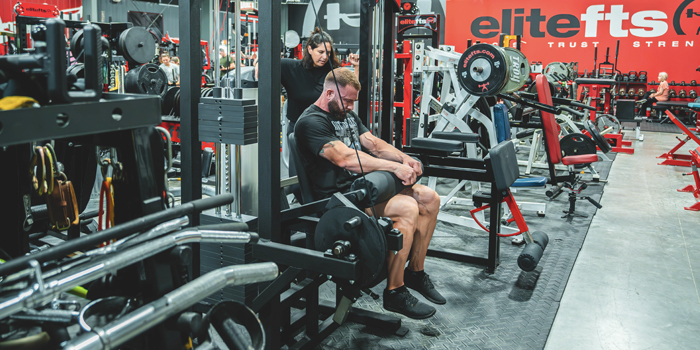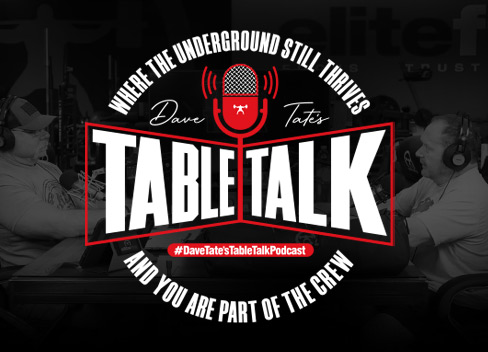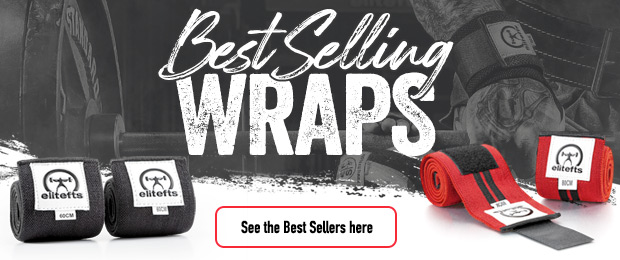
Training legs with the intensity needed to cause hypertrophy and progress in the gym is difficult enough when you are in your 20s or 30s; doing this in your late 40s and into your 50s is considerably harder. However, suppose you have a game plan that is both logical and sensical. In that case, training your legs intensely is entirely possible well into your 50s and beyond without putting yourself in a high-risk situation for injury.
The two main limiting factors for training legs hard as we age are the vulnerabilities created in the lower back and the knees. I know this because I am a super genius, and I also know this because I am 54 years old, and I have been training for 40 years.; I have experienced chronic lower back issues, and I have experienced chronic knee issues. I have also come back from both when I was told by medical specialists that I would not and that I should take up a different "hobby" (their words, not mine). After a very long period of trial and error, I will give you my advice on what I found worked for me and what has also helped many of my clients over the years.
I could have written this article for so many pages that I would need to write it in eight to ten "parts," but instead, I am going to give you a protocol that you can start to use that can help the vast majority of lower back and knee issues. Keep in mind that every individual injury is slightly different than the next.
About My Protocol
My protocol is a guide more than a black-and-white plan that will solve all of the issues you may be experiencing. The plan is meant to be assessed by you and tweaked as necessary. You still have to do your own trial-and-error to see how much work you can do, and you will need to read your body's feedback to know when to back off and when you can train harder.
If you do not have any current lower back or knee issues, but you are aging or have a lot of training years under your belt, it would behoove you to start using this protocol more proactively than if you are already injured and reactively applying it. The best position you can be in is to avoid lower back or knee issues versus doing nothing and putting off the inevitable. I can not think of anyone who has trained for an extended period of time, into their later years, and not had issues with their lower back or knees. If you are that person, count your days because it is more likely than not that you will end up with issues if you do not start taking proactive steps.
Lower back issues are the most debilitating because not only will they impact your training, but they will also impact your quality of life, as well. You will struggle to function even if you have a desk job that is not physical, and you will struggle to get quality sleep that is uninterrupted. Knee issues are not much fun, either, but the pain does not come close to a lower back injury.
My lower back and knee protocol has three main steps.
Step One: Stretch Before Every Workout
I know, stretching is lame, boring, and only for old people, right? Yes to the first two and the last one is a no, but most people do not stretch until they have an injury or a problem that forces them to stretch on a regular basis. Do not be that person.
Just 10-15 minutes of stretching before training is a great way to open up the supporting musculature of the hips, legs, and torso without zapping you with the energy to train intensely. I realize that you may have been told to stretch after training instead of before training. Stretching is more beneficial before training, especially before training your legs. Regular warm-ups using the exercises you plan to use for your leg session will not open up the lower back muscles enough to matter.
RECENT: Take The 2024 Dick Challenge
I am not recommending intense stretching that will have you doing the splits in eight weeks. Instead, I recommend stretching to open up any tight muscles that may be pulling your spine out of alignment. As you do each stretch on the left and again on the right, pay attention to whether one side is tighter than the other and focus more on the tighter side. When your flexibility is relatively equal on both sides of each stretch, your risk of injury goes down significantly while training. You could find this balance in only a session or two, or it could take weeks to find that balance.
I want to reiterate that I am not doing a five or ten-part series with this article, so I am going to list what muscles you want to focus on while doing your stretching protocol, and you can either find your own specific stretches for each muscle, or you can use the link that will take you to my TEAMSKIP YouTube channel that focuses on the stretches that I recommend to clients and use myself, personally, before every single workout for the last nine years. And since using this exact protocol, I have been injury-free in my lower back for that same period of time.
Spend two minutes on a stationary bike, treadmill, or elliptical to elevate your heart rate and provide warmth to the body before the stretching protocol.
Stretch Protocol
Do one stretch for each muscle below and perform that stretch for five sets, holding the stretch for eight to ten seconds, releasing and shortening the muscle between each stretch set.
I want to reiterate that the stretches should not be intense but instead light. Also, you should build the tension slightly for each stretch set, with the first being the lightest tension and progressing slightly for each stretch set. Always contract the muscle that opposes the muscle being stretched. Example: If you are stretching your hamstring, keep the quad flexed.
- Psoas stretch
- Adductor stretch
- Hamstring stretch
- Glute stretch
- Piriformis stretch
- Lower back stretch
Remember to check out the link to my stretching chapter on my YouTube channel, which is part of the TRTbodybuilding online DVD. I understand that DVDs are outdated, but that is what I called it at the time, and I have left the label alone. It is free information to help anyone that has lower back issues, so do not give me any crap about the DVD moniker.
Step Two: Walk Backward on a Treadmill
After doing your stretches, spend five minutes walking backward on a treadmill. At first, start with the incline low and progress the incline every minute for a total of five minutes.
While walking backward, you do not want the treadmill's speed to be too fast. You want to be able to push against the treadmill with every step to provide some resistance for the quads and the support structure of the knee. I recommend starting with long strides and then mixing up some shorter, quicker strides randomly throughout the five minutes on the treadmill. During the longer strides, focus on dorsiflexion at the ankle as you push the treadmill away from you. I prefer to lean against the machine while doing this as it helps provide better balance. You do not need a lot of resistance to provide a benefit to the knees. You should not be mimicking pulling a sled. The resistance should be relatively low.
Step Three: Ride Three Minutes on a Recumbent Bike
After the treadmill, set the seat of a recumbent bike to the point where each stride will not allow full extension of the leg but close. Knee issues or knee pain tend to be closer to the point of full extension (usually within the last 2/3 of full leg extension). If you are the exception to this rule and you have discomfort more in knee flexion, set the seat lower so that your strides are within that area where you experience discomfort. Keep the tension low and build resistance throughout the three minutes on the bike. Your quads should not be on fire like you are training them, but they should have a small pump after that three-minute session.
After those three steps:
- Go immediately to your warm-up sets for legs.
- Do not allow too much time to cool down before starting the warm-up sets.
- From there, build your warm-up sets and train legs as hard as your lower back and knees will allow.
Final Thoughts
I can not recommend which exercises to do for the legs because everyone is different based on their specific limitations or injuries. Only you can know or find out which exercises work well for you. My best advice is to forget about which exercises you have been told are king for massive quads by FLEX Magazine in the 90s and instead focus on the exercises that you feel activate the target muscles the best. We are all better off using exercises that do not provide a vulnerability versus specific exercises that put us at risk of injury. Even if squats truly ARE the king of all leg exercises, if you are only able to do squats four months at a time before repeatedly injuring yourself, that is not a productive take on the big picture.
I understand that this three-step protocol is time-consuming. It will add to your time in the gym on leg day. The alternative is that you leave yourself far more open to inflammation in your lower back and/or knees instead of investing extra time in your lower back and knee health. The decision is yours; I already made my decision nine years ago, and I am happy I did—Just Sayin'.
BIO
Ken “Skip” Hill has actively participated in the sport of bodybuilding for almost forty years, competing for twenty-plus years. Born and raised in Michigan, he spent 21 years calling Colorado home with his wife and their four children. Four years ago, he and his wife traded the mountains for the beach, relocating to South Florida. His primary focus is nutrition and supplementation, but he is called upon for his years of training experience, as well. He started doing online contest prep in 2001 and is considered one of the original contest prep guys (when the bodybuilding message boards were still in their infancy). Skip’s track record with competitive bodybuilders is well-respected, and he also does sport-specific conditioning, including professional athletes.











